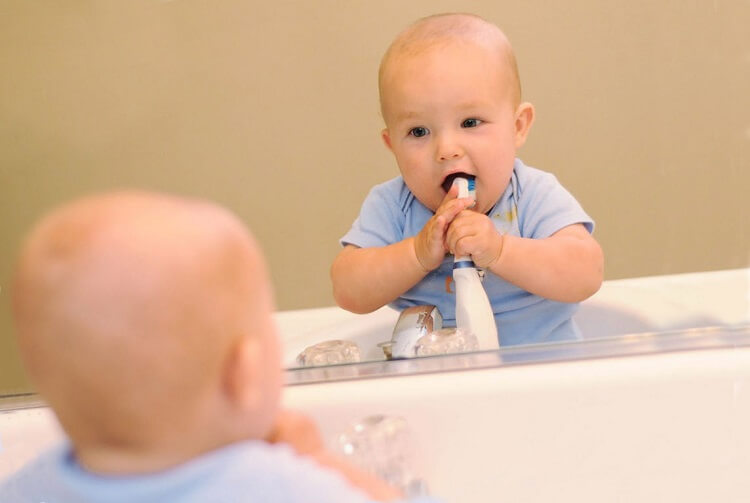To the question of when a child needs to start brushing his teeth, any dentist will answer that this can be done immediately after teething. The opinion of parents on this matter is ambiguous, because many are used to considering toothpaste and a brush as “adult” attributes, and waiting for the child to reach at least three years of age. There are those who even believe that milk teeth should not be brushed.
Brushing your teeth is an important moment in teaching your baby the skills of personal hygiene, and the sooner he learns to do this, the less problems will arise with their health.
At the initial stage, in caring for your teeth, it is enough to limit them to treating them with a piece of cotton cloth soaked in ordinary boiled water. After some time, you can start using a special silicone brush that is put on the parent's finger. When the child is a little older, invite him to pick up a children's toothbrush and brush his teeth.
Teach your child to brush their teeth twice a day.
It is recommended to choose toothpaste exclusively in accordance with the age of the baby. The paste, designed specifically for children under 3 years of age, does not contain fluoride, since up to this age the child, as a rule, swallows it.
Due to the early age of the child, his motor skills are not yet sufficiently developed, and he will not be able to brush his teeth correctly on his own, so parents must either carry out this procedure themselves or control the process.
You can start using toothpaste after a year. You should choose your toothbrush very carefully and change it once a quarter. The bristles of the brush should be soft and the head small.
It is desirable that by the age of two the child already knows how to brush his teeth on his own, and this is best taught by a parental example. Do this with your child, then he will quickly get used to this hygiene procedure.
It is necessary to immediately teach the child and the technique of brushing his teeth:
- the outer and inner surfaces of the teeth are cleaned by holding the brush at an angle of 45 degrees with movements from the base of the tooth to the upper edge;
- the chewing area of the jaw is cleaned with horizontal movements;
- cleaning the inside of the front teeth, the brush is held vertically, and the movements are directed from the base to the edge of the incisors.
By teaching your child how to properly and timely brush their teeth, you will help them avoid inflammatory gum disease and carious lesions of tooth enamel. If you have any doubts about whether the child has oral diseases or whether the bite is correct like here , do not be afraid to visit a pediatric dentist, this will help prevent the development of pathologies in your children at an older age.
PS If you liked the article, please press the buttons of social networks.


Leave a comment